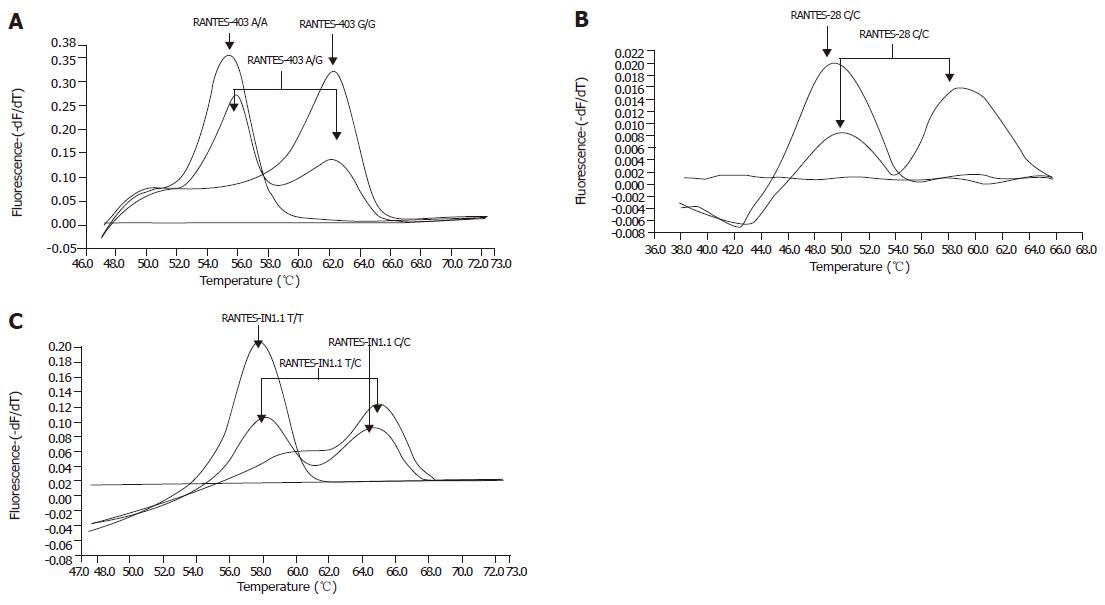Copyright
©2005 Baishideng Publishing Group Inc.
World J Gastroenterol. Dec 28, 2005; 11(48): 7631-7638
Published online Dec 28, 2005. doi: 10.3748/wjg.v11.i48.7631
Published online Dec 28, 2005. doi: 10.3748/wjg.v11.i48.7631
Figure 1 Shows the melting curve analysis (first order derivate) for different genotypes of the RANTES-403 (A), RANTES-28 (B), and RANTES-IN1.
1 (C) polymorphisms. When the PCR product is melted, the probe-DNA binding will break up at a hybridization probe-specific temperature, which causes a loss in emitted fluorescence energy. This can be seen as a peak in the first order derivate of the melting curve. As the sensor probe is specific for only one of the two possible alleles in each PCR, binding of the probe to the other allele will cause a mismatch and therefore a weaker coupling and disengagement of probe and DNA at lower temperatures.
- Citation: Ahlenstiel G, Iwan A, Nattermann J, Bueren K, Rockstroh JK, Brackmann HH, Kupfer B, Landt O, Peled A, Sauerbruch T, Spengler U, Woitas RP. Distribution and effects of polymorphic RANTES gene alleles in HIV/HCV coinfection – A prospective cross-sectional study. World J Gastroenterol 2005; 11(48): 7631-7638
- URL: https://www.wjgnet.com/1007-9327/full/v11/i48/7631.htm
- DOI: https://dx.doi.org/10.3748/wjg.v11.i48.7631









